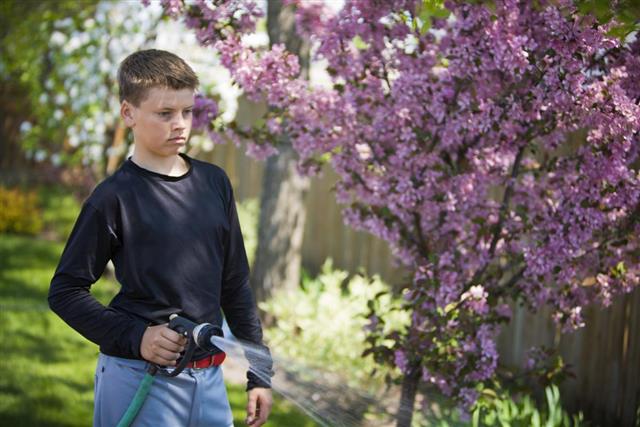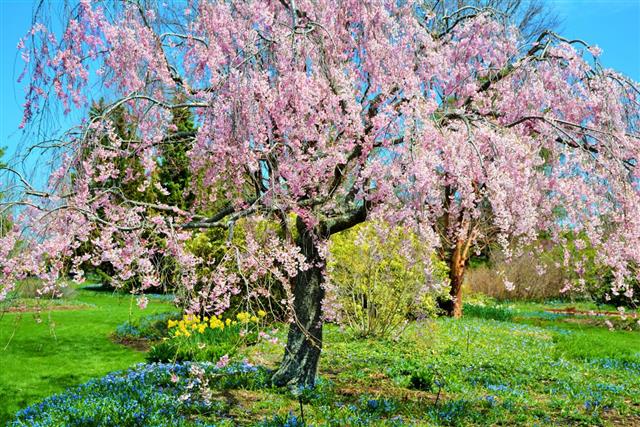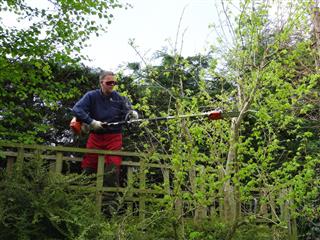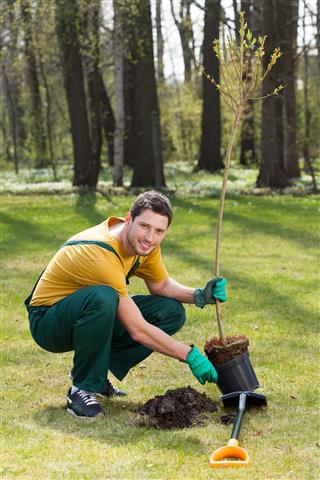
The dwarf weeping cherry tree is appreciated for its white or pink blossoms that cover the cascading branches. Growing healthy dwarf weeping cherry trees is not at all difficult, as it is adaptable to various soil types and climatic conditions.
Weeping cherry trees are some of the most preferred landscaping tree varieties, planted for their unmatched aesthetic value. The standard tree size cultivar is suited for growing in formal gardens or larger yards, where there is plenty of space. If you have limited planting area, you can still enjoy the stunning beauty of cherry blossoms by growing the dwarf weeping cherry tree. No doubt, this true ornamental tree requires special care to maintain its height and shape. But, it is a hardy tree that adapts in a wide range of growing conditions.
Growing Dwarf Weeping Cherry Trees
As the name goes, the branches of this cherry tree droops down towards the ground and sways beautifully in tune with the direction of the wind. From the main stem, they develop outwards first, and then arch downward to give that weeping effect. The branches often overlap with each other and touch the ground. To avoid this, you should trim them above the ground level. Best adapted in USDA zones 5-9, it can be maintained in other areas too. Mentioned below are some gardening tips for growing dwarf cherry tree in the yard.
Size
As far as the height is concerned, this tree measures about 20 feet or more, when allowed to grow on its own. The spread of this ornamental cherry tree variety is the same as its height, approximately 15-25 feet. However, with proper training and pruning guidelines, you can maintain it in shorter height and umbrella shaped canopy.
Selection
The most challenging part for growing this weeping cherry tree is buying the saplings. This is because most of the plantlets sold as dwarf varieties are full sized ones. In short, it is difficult to find true dwarf variety that is developed by grafting method. Of course, you can visit a good nursery center and inquire about the tree size before purchasing it.
Planting Site
Similar to dwarf cherry tree or other dwarf fruit trees, this cultivar can be grown in garden soil or in pots. While maintaining in a container, you need to prune branches as well as roots every year. Hence, if you have less time for dwarf weeping cherry tree care, consider growing it in a garden. For getting heavy blooms, choose areas that receive partial to full sunlight, and have well-drained soil.
Planting
For planting this flowering tree, prepare the soil with necessary supplements as you usually do for growing trees. Then, dig a hole that is twice the actual size of the root ball. Carefully, remove the sapling from its original vase and place it in the hole. Cover it with soil, and press gently around the stem. If you are growing two or more these trees, leave a space of about 20 feet between two adjacent saplings.
Care
Correct watering and laying a mulch layer are the key tips regarding the care of a weeping cherry tree. Preferably, mulching is done immediately after planting the tree. This helps in conserving soil moisture, controlling weeds and at the same time, providing a better surface layer for the weeping branches that touch the ground. Water at regular intervals during dry months to ensure maximum flower production.
Pruning
Timely pruning is a basic tip for healthy growing, whether it is the full sized or the dwarf version. You can trim the lower branches and weak sprouts during autumn, when the tree is in a dormant state. Mark the twigs first before pruning and trim them individually, making sure that the tips are at different heights above the ground surface.
With the arrival of spring, you will notice flower buds developing in the drooping twigs of your tree. Very soon, the branches will be covered with beautiful blossoms, adding a beautiful touch to your landscape design. To avoid diseases harming your cherry tree, follow proper care instructions, in terms of irrigation and pruning.



